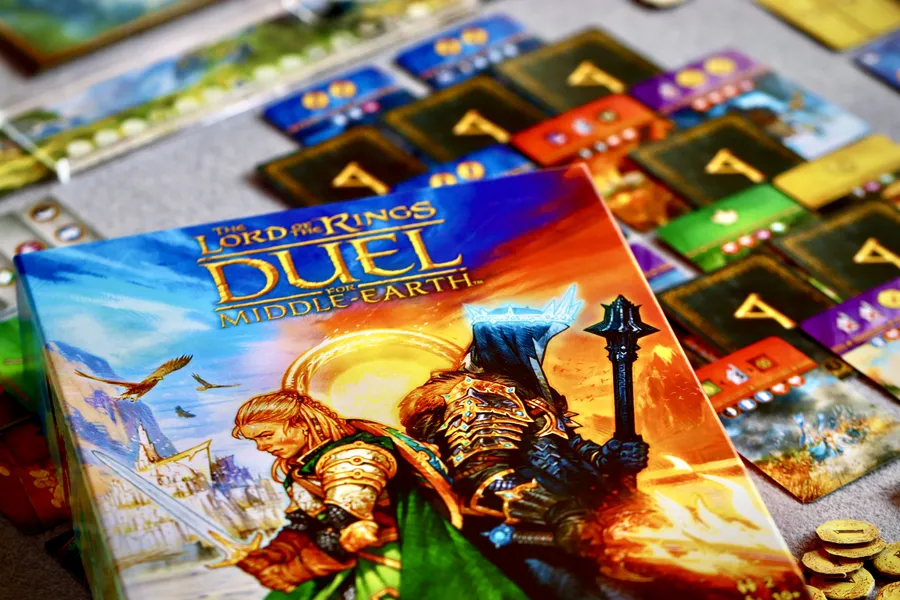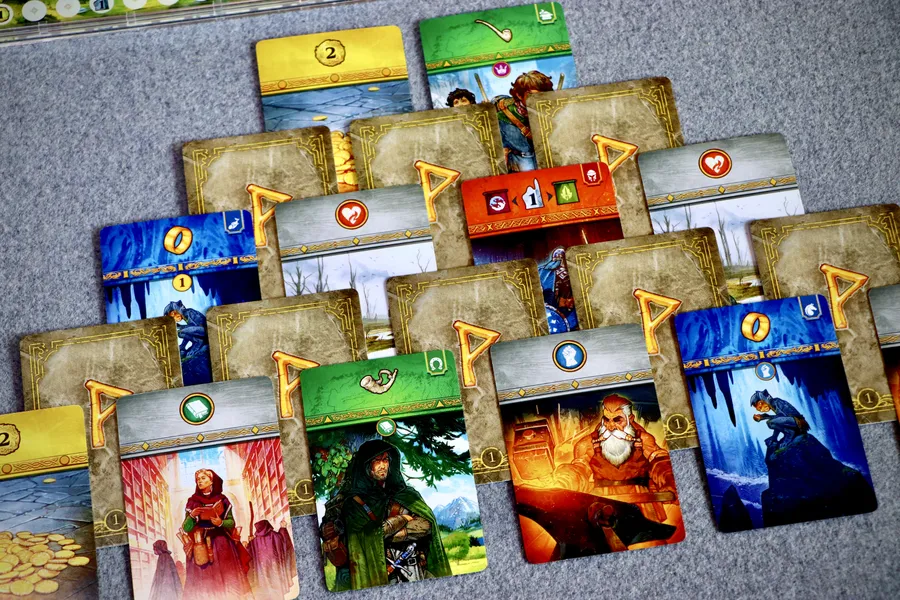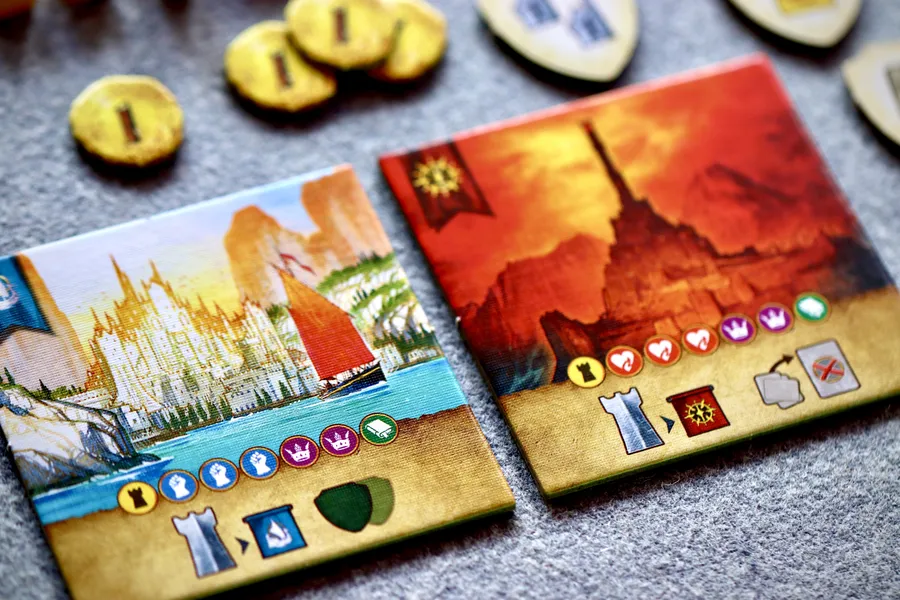Lord of the Rings Duel: Battle for Middle Earth
Ever want to play a card drafting game that mixes in some area control, and also has a bit of a racing element? Welcome to Lord of the Rings Duel: Battle for Middle Earth. This isn’t an “everything but the kitchen sink” kind of game, but it sure does feel that way sometimes as you balance the various ways to win in this easy to learn variation of 7 Wonders. But can a game with a major IP, backed by a strong board game franchise, work well? Let’s take a look!

In Lord of the Rings Duel, two players will battle it out to win the game in one of three ways – either one player will reach a point on the track (Fellowship reaching Mordor or the Nazgul reaching the Fellowship); or if one player is present in all the regions on the central board; or whoever is present in the most regions at the end of the game if no other victory conditions have been met. Moving along the tracks, deploying units and towers to the board, and gaining other bonuses are all tied to the game card drafting system.
Like in 7 Wonders Duel, cards are drafted from the centre of the table as opposed to being passed from player to player. Cards are laid out in a specific way on the table, with some cards overlaping other cards, and some cards appearing face down. The only available cards are those that are not being overlapped by other cards, and that are face-up. Players can draft these cards – take them if they are free with no cost, or pay the cost to take them – and place them into their own tableau they are building.

There are a number of different cards, and those familiar with 7 Wonders will understand better than most what they all might do. There are skill cards that will allow you to purchase other cards and landmarks as the game progresses. There are green cards representing the races of Middle Earth. Collecting these cards will allow players to gain powerful and often permanent boosts for the rest of the game. There are yellow cards that provide money, and money can be used to pay the cost of a symbol you don’t have in your collection. And finally, there are blue cards that represent the one ring and either move the Fellowship closer to Mordor, or the Nazgul closer to the Fellowship.
The game is played over three rounds, and when the rounds are over, or when a victory condition is met, one player will be crowned the winner!

My favourite part of Lord of the Rings Duel is the way you manipulate turn structures to make sure you get to draft the cards you want. Every turn you must take an action, which is either buying a landmark tile, buying a card from the central display, or discarding a card from the central display for a set amount of coins. Certain cards are always face up in the display, even if you cannot take them yet – some of these cards might be really enticing to you, but as this is a two player game, even if the other player doesn’t want the card, it could be in there best interest to discard that card so you cannot have it. I love this tension. There were times when I purposefully purchased a landmark tile that I didn’t REALLY want, simply so that the other player, who couldn’t afford a landmark tile, would be forced to take a card from the display, opening up the card I really wanted in the first place.
The area control aspect of the game is also a really neat addition to the 7 Wonders Duel concept. You can choose to not attempt to win that way, but you always need to be mindful of the board and who has control where. And if your ultimate goal of winning by reaching your destination on the track doesn’t happen before the end of the third round, you better hope you paid more attention to the area control board than you originally planned. Again, I love the balance here, the need to make sure you are checking in on how that board is developing. It can change fast too, which adds to the turn-to-turn tension.
I have almost no complaints about Lord of the Rings Duel: Battle for Middle Earth. The production, as we previously discussed, is top notch. The theming is great, the art is fantastic, the turn-to-turn mechanics are phenomenal. This is a pleasure to table again and again, and it is so easy to teach. If you want more 2-Player games in your life, this is easily one of the best!



 Adam Roffel has only been writing about video games for a short time, but has honed his skills completing a Master's Degree. He loves Nintendo, and almost anything they have released...even Tomodachi Life.
Adam Roffel has only been writing about video games for a short time, but has honed his skills completing a Master's Degree. He loves Nintendo, and almost anything they have released...even Tomodachi Life.